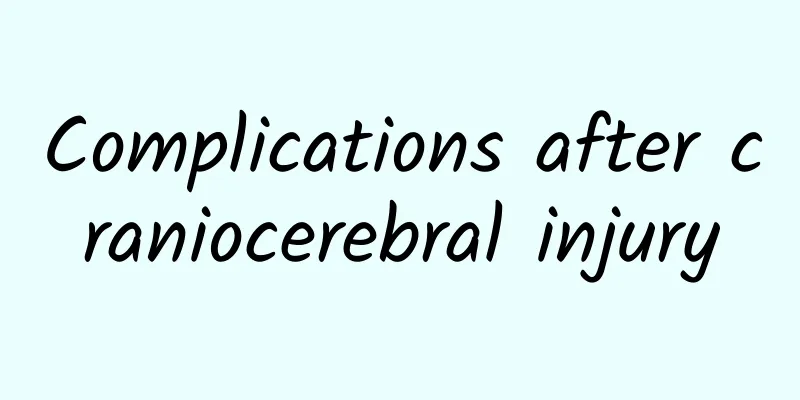Complications after craniocerebral injury

|
Traumatic brain injury is a very common brain disease and also one of the more serious ones. This is mainly reflected in its impact on patients. Craniocerebral trauma can cause patients to experience dizziness, nausea, and even concussion, posing a great threat to their physical health. Craniocerebral trauma generally brings many complications to patients. So, what are the complications of craniocerebral trauma? 1. Brain concussion syndrome: A brief loss of consciousness occurs after a brain concussion, which usually recovers within 30 minutes. After waking up, the patient cannot recall the situation at the time of injury or the moments before the injury. Patients may experience headaches, vomiting, dizziness, irritability, emotional instability, lack of self-confidence, inattention, and autonomic nervous system symptoms such as pale skin, cold sweats, decreased blood pressure, slow pulse, and shallow and slow breathing. 2. Coma caused by brain trauma: Coma of varying duration may occur after brain trauma. During the process from coma to recovery, there may be drowsiness, confusion, delirium, etc. The disturbance of consciousness may be mild or severe and may fluctuate. 3. Delirium caused by brain trauma: Delirium usually comes from coma or drowsiness. Some patients' behavior during delirium reflects their pre-illness occupational characteristics. Many patients are resistant, noisy, and uncooperative, while others are more aggressive. There may be horrific hallucinations, and severe patients may have confused excitement or even intense impulsive violent behavior. Delirium may be replaced by other disturbances of consciousness, such as trance and dreamlike states. 4. Amnesia syndrome caused by brain trauma: Its most prominent feature is fabrication based on amnesia, and patients are often irritable. Its duration is shorter than that of alcoholic amnesia. Compound Sea Snake Capsule 5. Subdural hematoma caused by brain trauma: It can occur soon after the injury, and headache and drowsiness are common. Occasionally it is accompanied by delirious motor excitement, and about half of the patients have papilledema. Chronic subdural hematoma is characterized by drowsiness, dullness, memory loss, and in severe cases, symptoms of global dementia. Some patients have slightly elevated cerebrospinal fluid pressure, increased protein count, and a yellow appearance. |
>>: Is it serious to have bacteria in the blood?
Recommend
What are the traditional Chinese medicines for treating chronic glomerulonephritis?
The occurrence of chronic glomerulonephritis is r...
What are the symptoms of intestinal folding?
Many people may not pay much attention to intesti...
Lower motor neuron damage
Due to some uncontrollable external accidents, da...
What to do if you have stomach bloating
Stomach bloating is very uncomfortable, what shou...
The blood return from venipuncture is good, but why is there a bulge?
Infusion is a very common method of treating dise...
Why is it that a baby with cerebral palsy doesn't look at people when held upright?
For babies with cerebral palsy, there are many sy...
What to do if a child has hernia? Chinese medicine remedies are effective
Hernia is quite common in children, usually durin...
Are centipede cough pills effective?
In real life, cough is a common lung disease. Cou...
What to do if your child sweats too much? An old Chinese doctor tells you how to treat it
Some parents may find that their children sometim...
Is jogging okay for lumbar muscle strain?
Under the current labor intensity and pressure, m...
What foods are good for beauty and skin care?
Every woman wants to have good skin. In order to ...
What to do if your eyelids become dry, flaky, red, and itchy
Sometimes people may suddenly find that the skin ...
Sciatica
Sciatica usually occurs in people around 40 years...
What are the benefits of donkey's tail?
In daily life, people generally prefer to eat bee...
Several possible diseases of severe anemia
Anemia exists in all female friends to a greater ...









